Welcome back to our occasional series, “How They Made It,” where we explore the food and drink of Outlander. Let’s take a look at Black Bun, a traditional dish at Hogmanay. Slainté!
(Note: some of the links on this page can be with affiliates that give me a small commission for my referral at no extra cost to you, and as an Amazon Associate I earn from qualifying purchases.)
Learning about Hogmanay foods
One of the things I love about loving Outlander is that I learn so much about Scottish traditions and the food associated with them. I had never heard of Hogmanay or first footing before I read the books, and the show gives us nice glimpses into how those traditions would look, taste, and sound. In the title card for the Outlander Season 3 Episode “First Wife,” we got a shot of a table laden with food, and someone loading up a plate of figs held by the adorable Joannie McKimmie (presumably to be taken to Jamie before enticing him to dance). The camera pans in on an interesting looking dish…what looks like a fruitcake wrapped in pastry. Well friends, you know me well enough by now to know that I would want to make a…uhm…whatever it was, and the hunt was on. Turns out that pastry is called Black Bun, a variation on the classic fruitcake that’s given during the first-footing ritual, and it’s a traditional dish that goes back a few centuries.
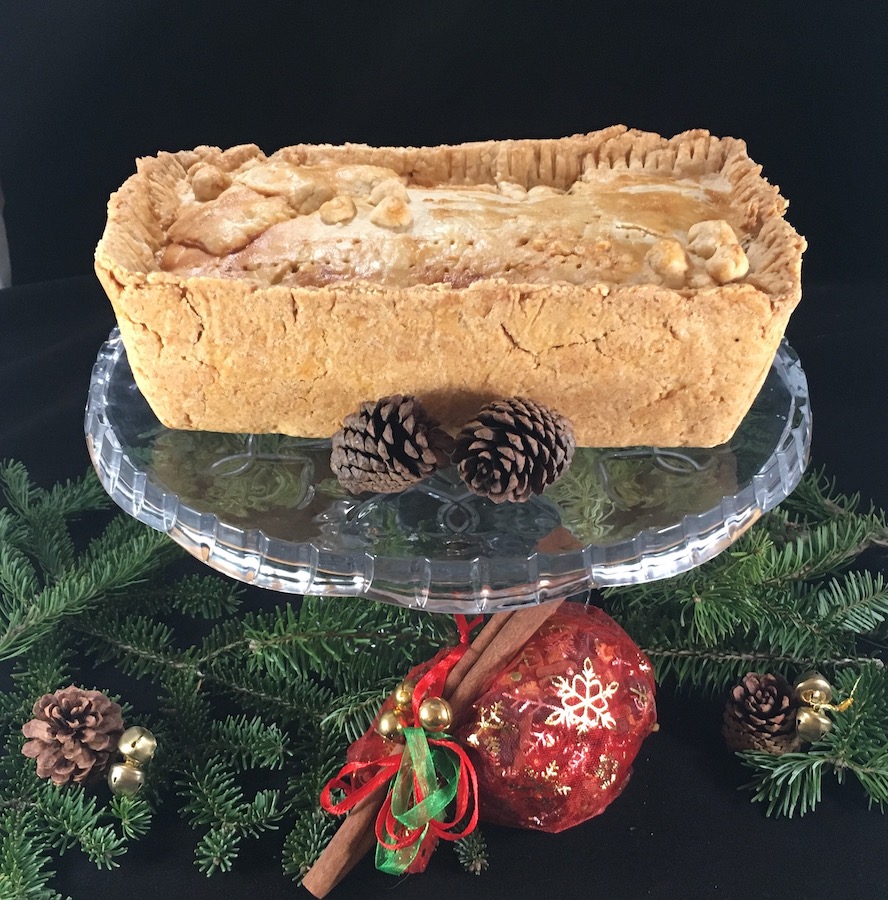
My Black Bun…it doesn’t look too different than the one from the show
[Side note: here are a couple of quick definitions for the uninitiated…Hogmanay is the Scots word for the last day of the year, and is associated with New Year celebrations. First footing is “being the first person to cross the threshold of a friend or neighbor and often involves the giving of symbolic gifts such as salt (less common today), coal, shortbread, whisky, and black bun (a rich fruit cake), intended to bring different kinds of luck to the householder.” Source: Wikipedia. Don’t you feel well informed now?]
Current Black Bun Recipes
I found and adapted two recipes for Black Bun, one from BBC Food and the other from Ancestors in Aprons (which itself is an Americanized version of the BBC Food recipe). For the pastry crust that surrounds the cake, both recipes used a combination of butter and lard or shortening. Now, when I make a pie crust I use an all-butter crust. It’s a flavorful, flaky, and tender crust. (The addition of apple cider vinegar to tenderize the crust is my secret ingredient). However, I reasoned that since this crust needed to be sturdy enough to wrap around the fruitcake, I’d use the vegetable shortening version (normally something I never use, let alone have on hand. I just happened to have Crisco shortening around from when we made the homemade fondant for my daughter’s wedding cake). I also decided to put a New England spin on the fruitcake by using dried blueberries (from Maine) and dried cranberries (from Massachusetts) instead of the traditional currents (you know, to personalize it a bit).
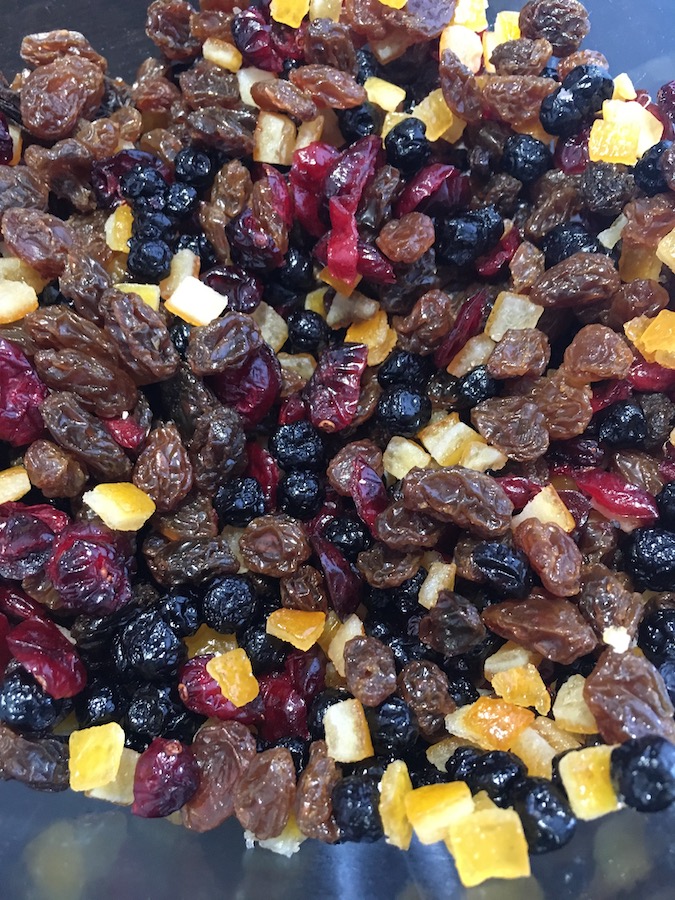
My New England version of the dried fruit mix…golden raisins, dried blueberries, dried cranberries, and candied orange peel
Historical Black Bun Recipe
One other note before we head to the recipe: while the show used a Black Bun that looked very much like the ones pictured on the recipe, historically speaking a different method was used. According to Scotsman Food & Drink, “First a yeast leavened dough, enriched with butter, is made. Some of this dough is reserved for the outer casing, the rest is mixed with dried fruits and spices to form the filling. This method is more similar to that found in 18th century Scottish recipe books.” I debated if I wanted to be true to history or true to the show, and I finally decided that since this post is about Outlander, that’s the version I was going to make. For those interested, I’ve included the more historically accurate recipe below.
One other other note (Sheesh!): the pepper grinder I have for fresh peppercorns doesn’t do a terribly good job of…well…grinding up the black pepper. Since you don’t want chunks of black pepper in a sweet dessert, I pulled out my handy-dandy Outlander-themed mortar and pestle. I got it as a holiday gift when I first discovered the show, and I feel like Claire when I’m using it!
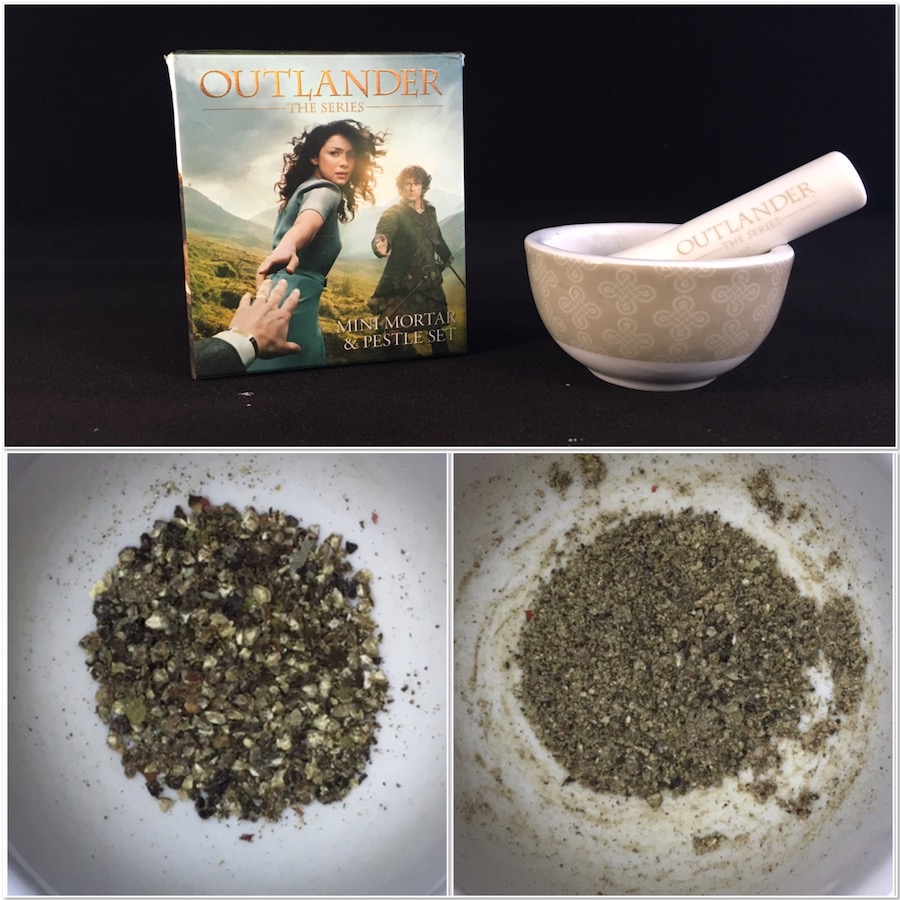
When you want finely ground pepper, pull out the mortar & pestle and get to work!
Enough blather…let’s bake some Black Bun! As per usual, my notes are in italics below.
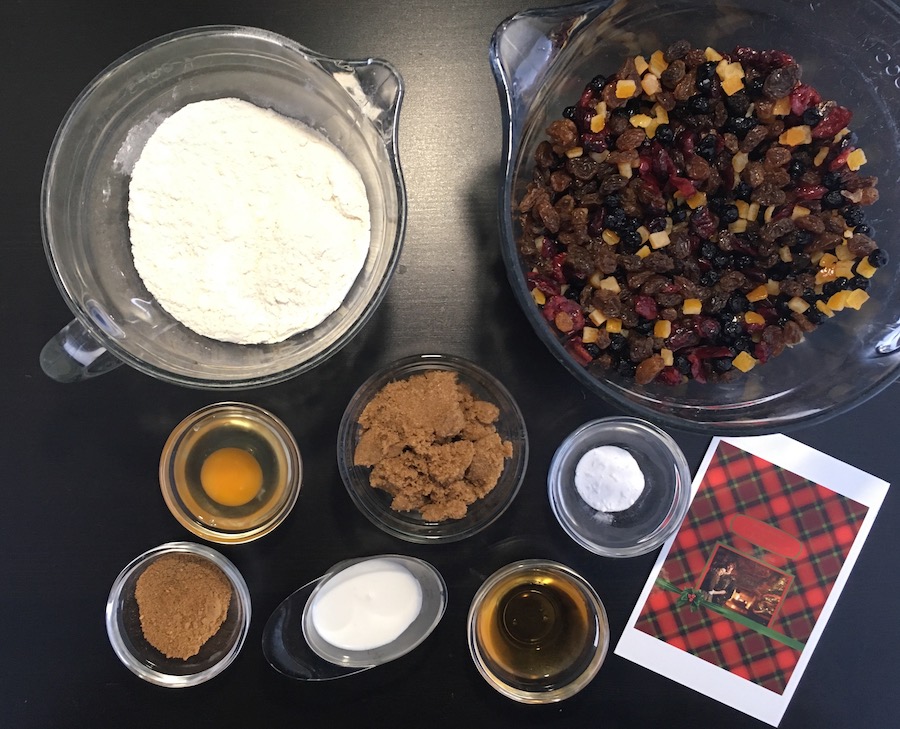
Black Bun filling goodness
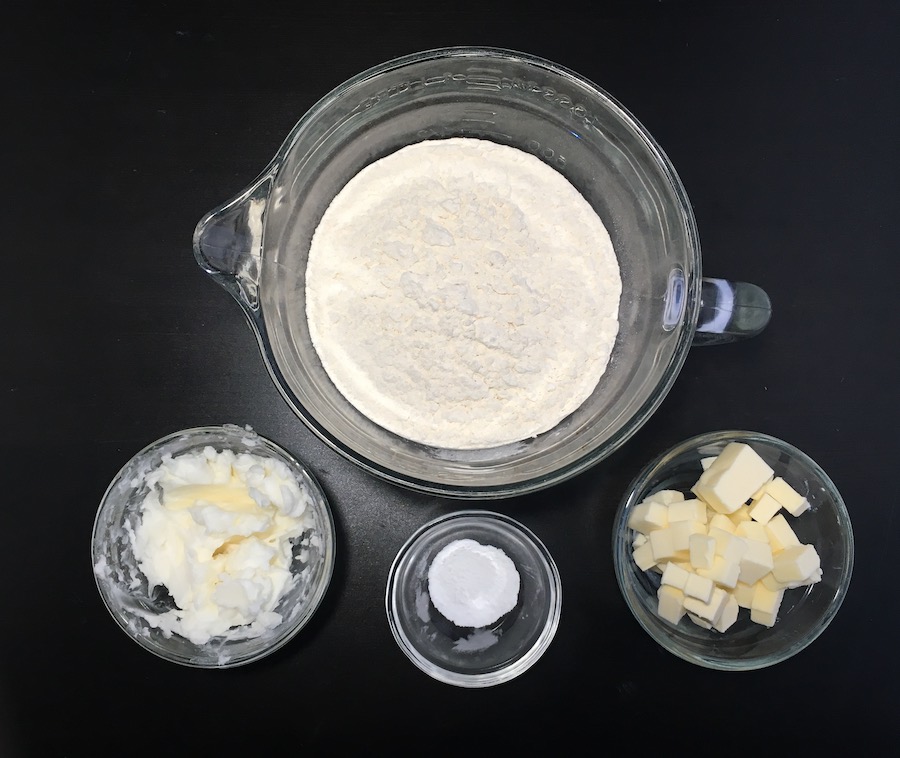
Pastry crust with butter and shortening
Assembling the Black Bun pastry…it’s a bit of work, I won’t lie.
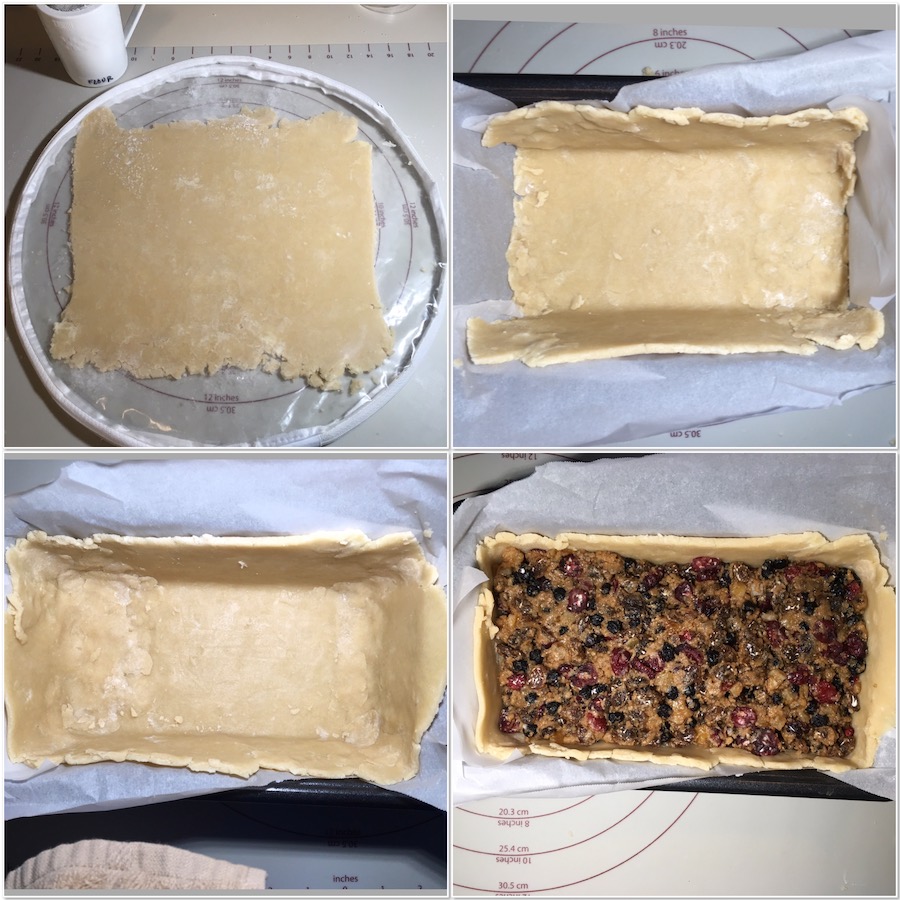
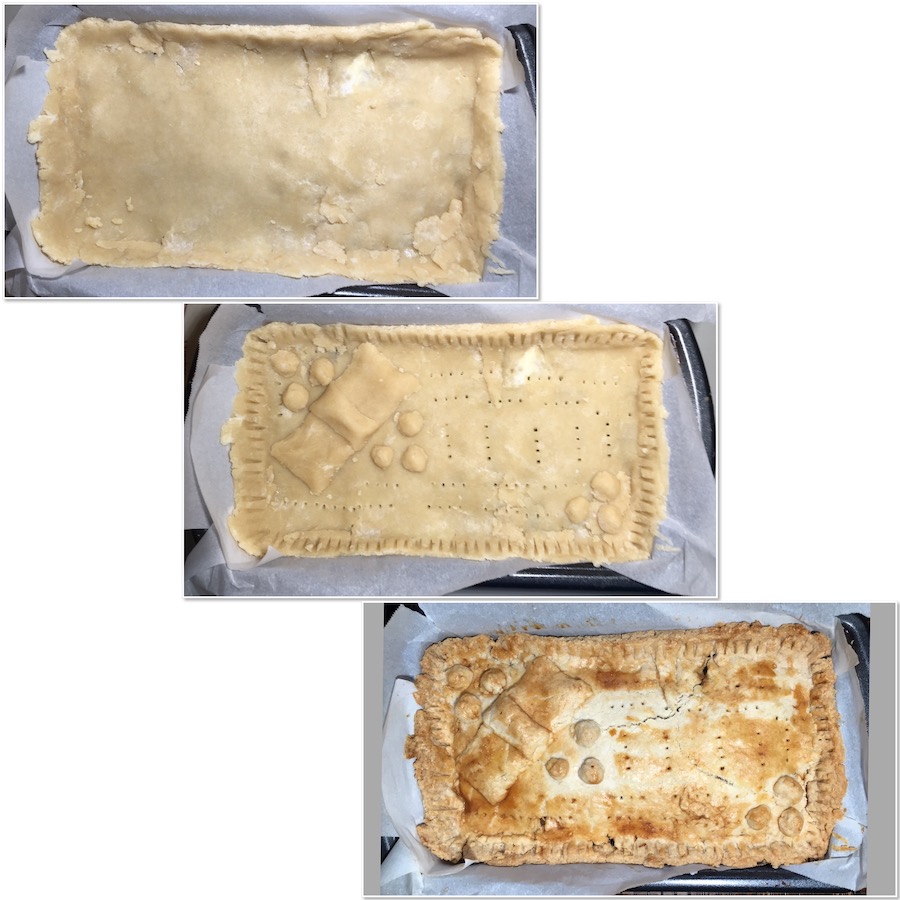
Black Bun before & after baking (don’t ask me about the decorations. I tried. I really tried)
My finished Black Bun
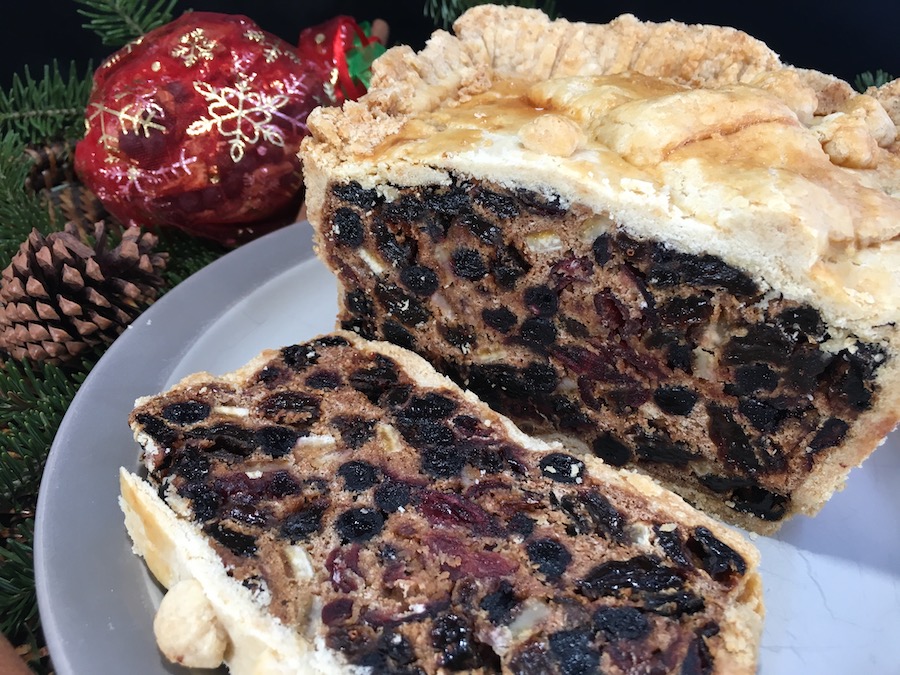
It’s good alone, but REALLY good with a drizzle of a good Highland scotch
Not quite knowing what to expect, the first time I tried a slice of Black Bun, the fruitcake component was good but seemed dry and a bit overpowered by the candied orange peel. I also wasn’t impressed with the pastry crust…it seemed dry and rather bland (I think next time I’d use the all butter crust). The next day the slice had a better balance between the dried fruits and the baking spices, and was really better when drizzled with 1 tsp of the Balvenie. There’s quite a lot of hassle in getting the crust into the loaf pan…I just can’t see Jenny or Mrs. Crook fussing that much. To me the historical recipe would be much easier to make. If you try either Black Bun recipe, please let me know how it goes. Whatever your New Year’s traditions, we at Outlander Cast wish you and yours a happy, healthy, and prosperous New Year!
Do you celebrate Hogmanay with a Black Bun? Which version do you bake or buy?
Black Bun
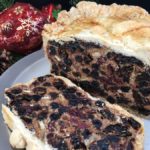
Adapted from BBC Food and Ancestors in Aprons
For the Pastry
- 300 g all purpose flour (2½ cups, 10½oz)
- 75 g lard or vegetable shortening (6 Tbsp, 3oz)
- 75 g butter (6 Tbsp, 3oz) (cubed)
- pinch salt
- ½ tsp baking powder
- 1 egg, beaten mixed with 1 Tbsp water (for glazing)
For the Filling
- 200 g all-purpose flour (1¾ cup, 7oz0
- ¾ tsp ginger (ground)
- ¾ tsp cinnamon (ground)
- ½ tsp nutmeg (ground)
- ½ tsp baking soda
- ¼ tsp black pepper (ground)
- 1/8 tsp cloves (ground)
- 1/8 tsp coriander (ground)
- 300 g raisins (2 cups, 10½oz)
- 150 g dried blueberries (1 cup, 5¼oz) (see Note)
- 150 g dried cranberries (1 cup, 5¼ oz ) (see Note)
- 100 g candied orange peel (½ cup, 3½oz) (chopped)
- 100 g dark brown sugar (½ cup, 3½oz) (packed)
- 2 Tbsp whisky or apple juice (see Note)
- 1 egg (beaten)
- 1 ½ Tbsp sour cream mixed with 1 ½ Tbsp water (see Note)
Make the Pastry
- Mix the flour, baking powder, and salt into a bowl. Rub in the shortening and butter until the mixture resembles breadcrumbs.
- Add four tablespoons of cold water and mix to a soft dough.
- Turn out and knead into a ball. Wrap in plastic wrap and leave to chill in the fridge while you make the filling.
Make the Filling
- Preheat the oven to 350°F.
- Line a loaf pan with baking parchment. (This was a struggle for me, but I won in the end)
- Stir the flour, baking soda, and spices together in a large bowl. Add the dried fruit and peel and stir to coat. Add in the brown sugar and stir to remove lumps.
- Combine the whisky, egg, and watered-down sour cream (or buttermilk), then add to the flour mixture. Mix well. (The batter seems dry to me, so I added an extra tablespoon of whisky. It helped.)
-
On a lightly floured surface, roll out two thirds of the pastry to a rectangle large enough to line the tin pan. Drape into the pan and press up against the sides. (I used the tip from Ancestors in Aprons: make one long strip going from one long end of the pan across and up the other end; then make two pieces about 3″ x 3″ to fit in the two ends. Be sure to wet the seams to be sure they stick together.)
- Spoon the filling into the pan, pressing down to compress.
- Roll out three quarters of the remaining pastry to a rectangle large enough to cover the pan. Dampen the edges of the pastry with water and press the pastry lid on top to seal. Trim the edges and crimp using the tines of a fork.
- Roll out the remaining pastry, along with any trimmings, and use to make a bow to decorate the top, then attach with a little water.
- Glaze with beaten egg and bake for two hours. Remove from the oven and leave to cool in the pan before turning out. You can place a piece of aluminum foil loosely over the top for the last hour of baking if it seems to be browning too fast.
The original recipe called for 300g currents, but I wanted a New England twist to the dish, so I substituted them for dried blueberries & dried cranberries
I used the Balvenie Double Wood 12 yr, an excellent scotch whisky from the Highlands
The original recipe called for 3 Tbsp buttermilk, so you can use it instead. I don’t keep buttermilk on hand, so my sour cream hack is a reasonable substitution
And now, as promised…the historical Black Bun

The historical version of Black Bun (photo credit: Scotsman Food & Drink)
Historical Black Bun
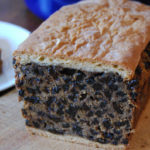
Adapted from Scotsman Food & Drink
For the Sponge Dough
- 500 g all purpose flour (4 cups, 17oz)
- 7 g fast action yeast (1 envelope, 2¼tsp, ¼oz) or fresh yeast (15g)
- 300 g water (1¼ cups, 10½ oz) (cold)
- 1 tsp salt (5g)
- 50 g castor sugar (superfine sugar) (¼ cup, 1 ¾ oz)
- 150 g butter (1½ sticks, 3/4 cup, 6 oz) (cold, unsalted)
For the filling
- 75 g butter (6 Tbsp, 3oz) (unsalted)
- 150 g dark muscovado sugar (¾ cup, 5¼ oz) (see Note)
- 50 g black treacle (¼ cup, 1¾ oz ) (see Note)
- 1 tsp cinnamon (ground)
- 1 tsp allspice (ground)
- 1 tsp ginger (ground)
- 1/4 tsp nutmeg (ground)
- 250 g raisins
- 250 g currants (see Note)
- 1 egg (optional, for glazing)
Make the Dough
-
Rub the butter into the flour in a large baking bowl. Now mix in the yeast, salt and sugar. Stir in the water and mix with your hand to form a fairly smooth dough. You do not need to knead it. Cover with a damp cloth or cling film (plastic wrap) and leave to rest for 2 hours.
Make the Filling
- While the dough is fermenting you can weigh out the rest of the ingredients. In a sauce pan slowly melt the butter and sugar together. This mixture will look terrible and split to begin with but keep stirring and it will all come together eventually. Stir in the spices and leave to cool completely.
- When the dough has rested remove 400g (14 oz) of the dough, keep this for the top and bottom layer.
- In the mixing bowl incorporate the remaining dough with the sugar, butter and spice mixture with your hand. Again, this takes a while to incorporate but it comes together in the end. Now stir in the fruit.
- Lightly grease your loaf pan with a bit of butter or flavorless cooking oil.
- Roll out the remaining dough on a lightly floured work surface. Roll it out to the depth of roughly ½ cm (about ¼ inch). It needs to be big enough to cover the bottom and top. You can use the loaf pan to cut out the right size.
- Lay the bottom layer of dough in the pan. Pour in the fruit mixture and flatten this out. Now lay the top over and brush it with a beaten egg.
- Bake in a 150°C (300°F) oven for anything between 2 1/2 – 3 hours. This depends on the efficiency of your oven. A skewer should come out clean when the cake is ready. If the top is browning too much you can cover it with tin foil. Leave to cool completely before removing from the pan and slicing it.
You can substitute brown sugar for the Muscovado sugar and light molasses for the treacle
You can substitute any combination of dried fruits you wish. I won’t judge…
Discovering Outlander after Season 1 first aired, Tammy quickly went down the rabbit-hole on social media and podcasts and found a world of like-minded fans who not only tolerated her obsession, but encouraged the madness! She combined her Outlander-inspired interest for scotch whisky with her continuing passion for baking and storytelling in her blog, Scotch & Scones…Explorations in a glass and in the oven. Joining the staff of Outlander Cast as the resident baker has brought Tammy full circle, from a podcast fan to a contributing writer. You can follow her on Twitter, Instagram, and Pinterest at @scotch_scones, and find her on Facebook at @scotchandsconesblog.








This looks so gorgeous and I am making the top recipe, but just realized that an egg is listed as an ingredient in the pastry recipe, but in the instructions it does not mention it or say when to add it to the flour mixture. I’ve actually never made pastry that included an egg before. . .is this a typo? Clarification would be greatly appreciated. Hope mine turns out like your’s! Again, I am referring to the first recipe, not the historical one. Thanks.
Hi Theresa,
Sorry for the confusion…the beaten egg in the pastry ingredients, mixed with 1 Tbsp of water, is actually used as a glaze on the decorated pastry dough before you put the cake into the oven. I hope that helps. I’m glad you’re going to bake a Black Bun, and I’d love to hear how it goes for you…please post a picture in the OutlanderCast Clan Gathering FB page (you can tag me).
BTW – Egg is sometimes used in pastry dough, specifically Short Crust pastry (it adds richness and body). You can read about it on my “How They Made It: Baking Short Crust Pastry at Lallybroch” post (bit.ly/OutlanderPastry). Happy Baking!
O thank you for your swift reply. I have been chilling the pastry that I made, and did indeed re-read and see that the egg is for the glaze. I am using golden and regular raisins, cranberries and currants. I will be glad to post a photos of my Epiphany-Eve creation. Thank you so much for sharing this unique & wonderful recipe.
And thank you for sharing about the inclusion of egg in pastry sometimes- I always love to learn. Blessings of this New Moon to you!
I’d love to know what else is on the table. I make dollhouse 1:12 miniatures and am wanting to replicate this Hogmanay table. I see figs, apricots and maybe walnuts? Also a bowl of banock bits or is that shortbread? I’ve made Tudor food before, including cooked boar’s head – can’t wait to get started on this.